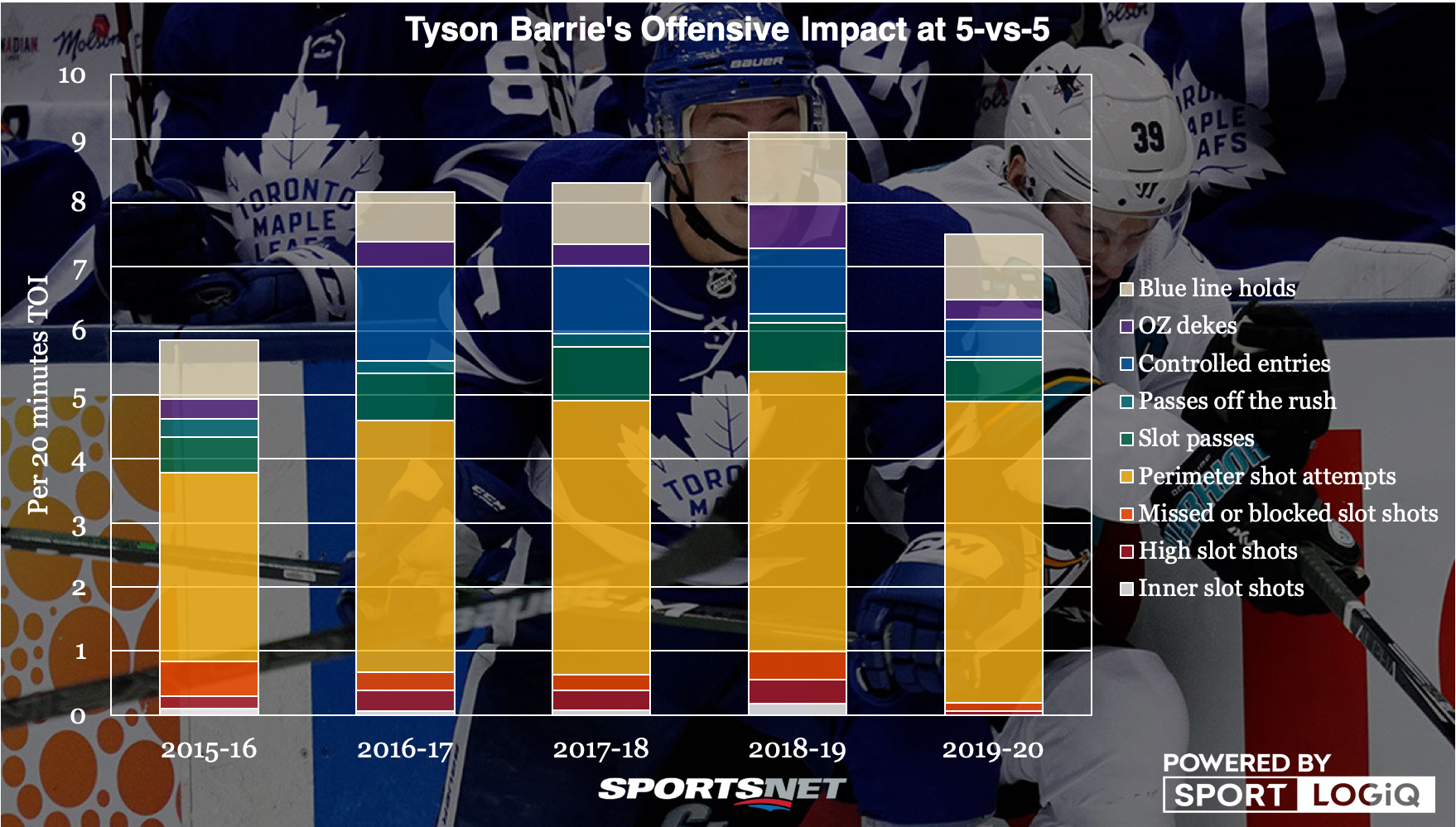It’s about time we talk about David Pastrnak, right? I mentioned him in short form recently, but the guy is scoring two points per game this season, split evenly between goals and assists, and if you were to just delete his power-play scoring entirely, he would still be scoring more than a point per game, and tied for 13th in league scoring. That’s a crazy level of production that we’ve got to break down a bit.
SPOTLIGHT PERFORMANCE
The strange thing about Pastrnak this season is when you look at the rates at which he’s putting up quality plays, he’s not blowing the doors off the league in any specific situation. He looks good by those metrics, don’t get me wrong, but there’s nothing specifically that shows up as Pastrnak being better than everyone else that’s driving results like these.
It isn’t until you look at season totals in all situations that you see the portfolio of offensive dominance Pastrnak is treating us to.

Looking at Pastrnak’s plays ranked against every other forward in the league this season, you get the complete picture of the multi-tool threat he is out there. He’s top-10 in the league in scoring chances, scoring chances on net, shot attempts, chances off the forecheck, completed slot passes, and completed offensive zone dekes in all situations. On top of that he’s top-30 in rush chances, cycle chances, and passes off the rush.
Obviously when he’s averaging two points per game, a large percentage of that production is going to be good fortune in a small sample size that can’t be sustained, but Pastrnak is a player who keeps raising the bar each season he plays. The 23-year-old has increased his goal and point totals each season he’s been in the NHL, including somehow topping 80 points last season in just 66 games, so yet another career year shouldn’t be a shock, it’s a trend for him.
One of the biggest reasons he’s able to continue outpacing his own best performances is all the varied ways he’s able to attack opponents. Pastrnak can beat you equally well with his shot, with his passing, or with his deking, which makes him incredibly hard to predict for defenders, forcing more space for himself, which really only makes him more dangerous since he has two linemates who happen to be among the best in the league as well.
[snippet id=4748264]
Even when you look at Pastrnak without the puck, he’s constantly winning battles in the offensive zone, recovering the 44th-most loose pucks of all forwards, so he’s keeping plays going on top of being the one of the league’s best offensive catalysts. Outside the offensive zone, he’s become quite the transition player as well, adding new options for the best line in the league to move the puck. Not very fair to everyone else, but he is a heck of a talent.
THE QUESTION
This week Steve Dangle couldn’t hold back any longer, he had to talk about the Toronto Maple Leafs. Specifically, Tyson Barrie.
“What the &%$# is up with Tyson Barrie? How has he been so bad? What’s changed for him?”
I’ve received a few questions about Barrie on Twitter as well, and in a way I get it, he’s been held without a goal after hitting 14 each of the last two seasons. He’s also made some very obvious defensive miscues, but that was always to be expected. Overall, Barrie leads all Leafs defencemen in Corsi for percentage at 57.3 per cent, and he’s been on the ice for the fewest passes to the slot against of any Leafs defender, the biggest defensive weakness the team has.
Barrie’s high danger scoring chance differential doesn’t look too hot, it’s just team average, but most of that is due to lack of offence created. So, is Barrie doing less offensively? Let’s take a look over a wide sample.

For starters, it looks like Barrie really took a step forward in terms of his offensive involvement at 5-vs-5 in 2016-17, but that’s a little misleading because in 2015-16 there is no accessible zone entry data, so there’s nothing showing up for him there in an area of his biggest strength.
Overall, Barrie has been very consistent for the last three previous seasons, with last season being his most impactful one offensively on the back of really pushing play in the slot for a defenceman.
This season there is a significant drop off, but the bigger issue is where that drop off is happening. Barrie’s play has fallen off in two areas specifically; he’s no longer pinching down into the slot and creating offence by acting as a fourth forward, and he’s not carrying the puck to attack off the rush nearly as often as he’s used to doing.
You might recall when I broke down the Leafs’ strengths and weaknesses so far this season, I noted that the Leafs have been attacking off the rush far less than in recent years, and that has hit Barrie in passes off the rush, controlled entries, and offensive zone dekes.
[snippet id=4167285]
The lack of offence generated by Barrie off the rush is systemic more likely than a specific problem with him since the whole team is playing differently, but the sticking to the perimeter in the offensive zone is a weird one.
Either Barrie is being told to take fewer risks in the offensive zone, or he isn’t comfortable taking those risks yet, because he hasn’t been a player that has been more cautious with age, by any means.
The lack of risk does appear to have come with the benefit of Barrie’s on-ice defensive numbers looking pretty stellar, but that could simply be a product of playing with a solid defensive partner like Jake Muzzin as well.
I think there’s lots of room for Barrie to be more free to create here, and the Leafs need some more push offensively of late.
[relatedlinks]







